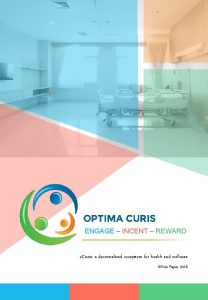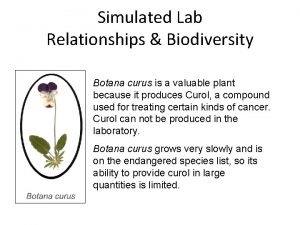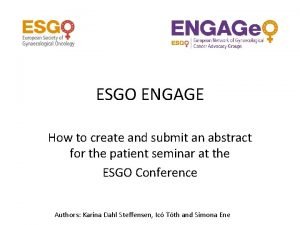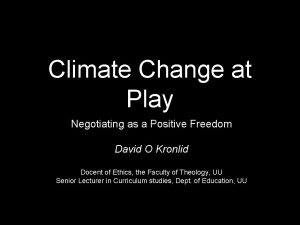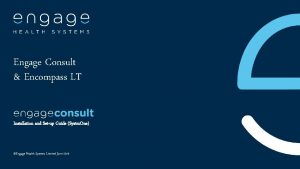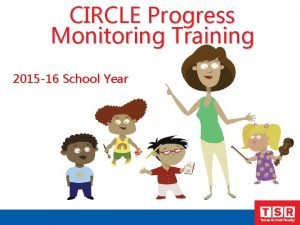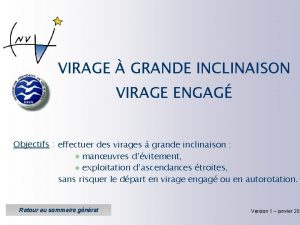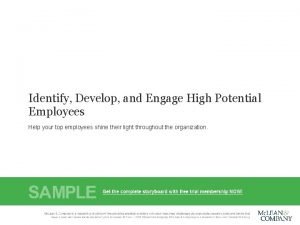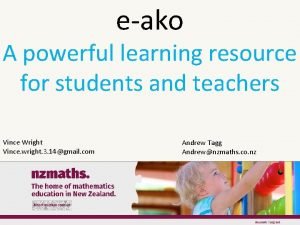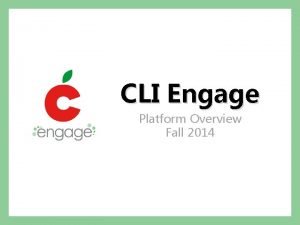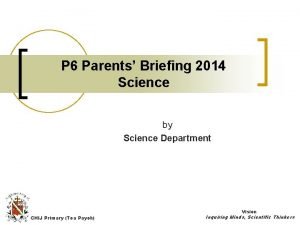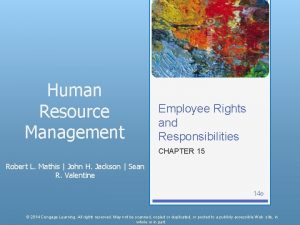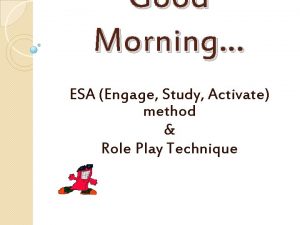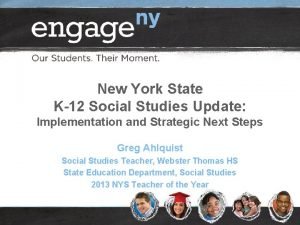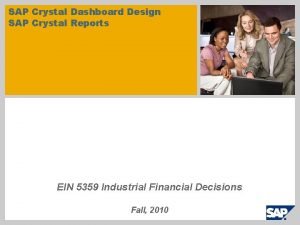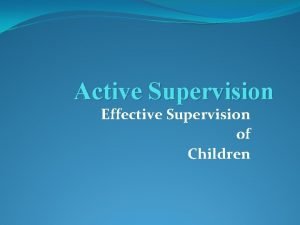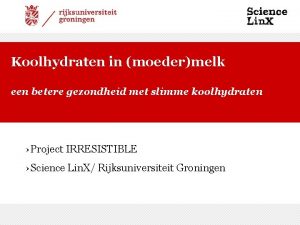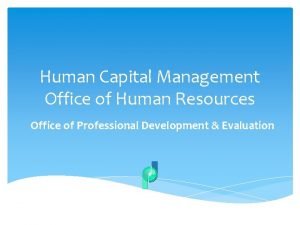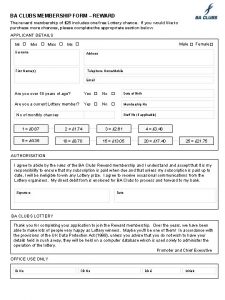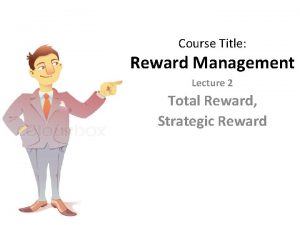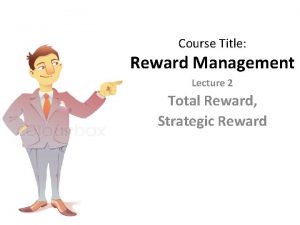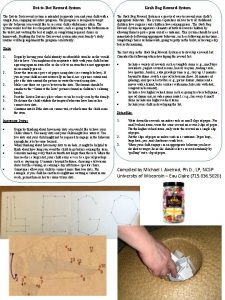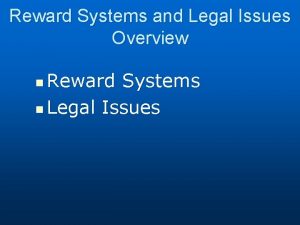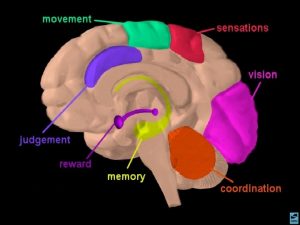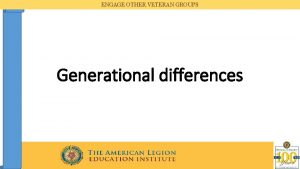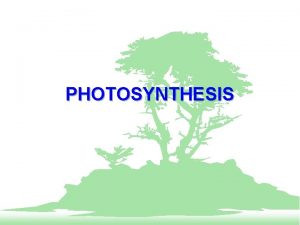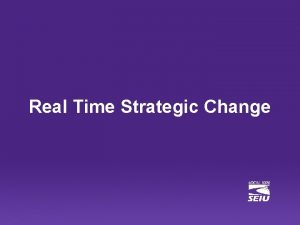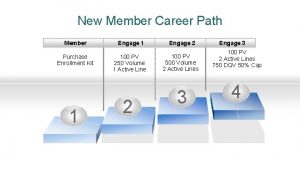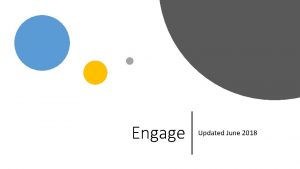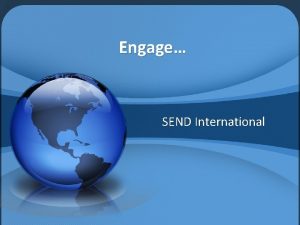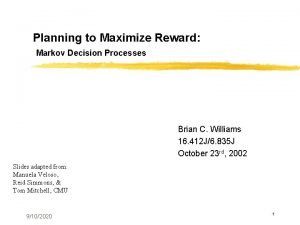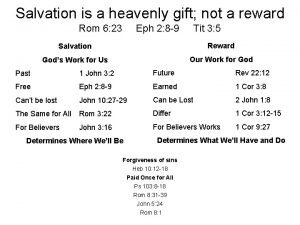e Curis ENGAGE INCENT REWARD e Curis a



























- Slides: 27

e. Curis ENGAGE – INCENT – REWARD e. Curis: a decentralized ecosystem for health and wellness White Paper 2018

e. Curis Disclaimer This e. Curis whitepaper is for information purposes only. The reproduction and distribution of this whitepaper for non-commercial and educational purposes is permitted without the express consent of the e. Curis Foundation, on the provision that the original source and the applicable copyright notice are cited. The e. Curis Foundation does not guarantee the accuracy of or the conclusions reached in this whitepaper, and this whitepaper is provided “as is”. The Foundation does not make and expressly disclaims all representations and warranties, express, whether explicit, implied, statutory or otherwise, whatsoever, including, but not limited to: (i) that the contents of this whitepaper are free from error; (ii) that such contents will not infringe third-party rights; and (iii) warranties of fitness for a particular purpose, suitability or function. The e. Curis Foundation and its affiliates shall have no liability for damages of any kind arising out of the use, reference to, or reliance on this whitepaper or any of the content contained herein, even if advised of the possibility of such damages. In no event will the e. Curis Foundation or its affiliates be liable to any person or entity for any damages, losses, liabilities, costs or expenses of any kind, whether direct or indirect, consequential, compensatory, incidental, actual, exemplary, punitive or special for the use of, reference to, or reliance on this whitepaper or any of the content contained herein, including, without limitation, any loss of business, revenues, profits, data, use, goodwill or other intangible losses. This whitepaper may be updated from time to time. To ensure the copy being read is up-to-date and correct please download the latest version from www. ecuris. io. 1

Contents e. Curis Mission 2 Problem 2 Solution 4 4 The e. Curis Ecosystem The Platform 8 Use Cases 9 Journey So Far Token Economics 12 13 Optima Token 13 Token Sale Event 15 Vitality Coin 18 Road Map 23 Advisors 24 Team 25 1

Mission e. Curis Today, healthcare is inefficient and has failed to address the rise of preventable lifestyle diseases such as diabetes, obesity and heart disease. These failures result in continually increasing health spend with no improvement in outcomes. Stakeholders such as patients, families, communities, payers and clinicians are separate and disconnected entities who lack the means to collaborate to influence actions and outcomes outside the four walls of the doctor’s office. Compounding this problem is a confusing and opaque healthcare payments model that excludes physicians, patients and their support networks from participating in incentivising healthy behaviours. e. Curis is changing this model by giving power to the patient and their community to enable positive and lasting impacts on health. e. Curis is a health community, with a global blockchain economy at its heart that connects all health stakeholders to support the patient to affect change. The e. Curis platform provides a global digital infrastructure to increase productivity and efficiency, reduce the total cost of healthcare, and improve quality of life and life expectancy. Patients, physicians, care teams, insurers, or commercial partners can interact to provide digital or physical goods and services with associated compensation or rewards for healthy actions and outcomes in the form of a common global network currency, Vitality Coin (VCN). VCN can then be used to purchase goods and services provided on the platform and be reinjected back into the community which in turn drives the economy. Through ongoing use of the e. Curis platform we leverage the power of the many to teach, encourage and reward healthy actions and outcomes, while making a positive change in the healthcare of tomorrow. Problem Maintaining your health is hard. Managing an illness is even harder. Doing it on your own is nearly impossible. Patients and their families, alongside the medical community, play a significant role in the financial and clinical outcomes of healthcare, yet today’s health systems fail to engage these stakeholders to reward the actions necessary to improve outcomes. Individual behaviour plays a significant role in impacting a patient’s overall health; an estimated 40% of premature deaths in the U. S. are due to modifiable behaviour. ¹ However, once a patient leaves a healthcare facility, stakeholders become disconnected from each other and lack the necessary tools to educate, motivate, and incentivize the right behaviours. 2 1. A healthcare revolution: Behavioural economics for behaviour change and preventive medicine July 28, 2015 2. Long-Term Adherence to Health Behaviour Change Kathryn R. Middleton, M. S. , M. P. H. , a, b Stephen D. Anton, Ph. D. , a, c and Michal G. Perri, Ph. D. a

e. Curis Recent studies have explored the difficulties in ensuring patients make long term lifestyle changes and sustain motivation where immediate results are minor and may go unnoticed. Maintaining health, and managing illness, requires taking many small actions to achieve long-term health goals. The effectiveness of any traditional medical intervention is significantly limited by poor behavioural adherence to lifestyle factors. ² Research into behavioural economics demonstrates that without small incentives to encourage these small actions along the way, people generally fail to complete tasks, and fall short of their long-term goals. ³ The current healthcare system fails to incentivize these tasks with no day-to-day tie between actions to maintain health and near term rewards. Compounding these issues, healthcare payment models are confusing, murky, and often conflicting. Historically, financial payment structures for the healthcare industry have not always aligned with healthier outcomes. For example, in the U. S. , healthcare has largely used a “fee-for-service” model where health systems get paid for a procedure, as opposed to a “value-based-care” model where health systems get paid for an outcome. This has driven health systems to focus on volume (i. e. more procedures) as opposed to value and outcomes. Governments both in the US and internationally, have recognized this issue and a major reform is underway to switch to the “value-based-care” model. At the individual level, the lack of a social approach to education and care, little to no immediate positive feedback, and the discounting of future consequences often leads to poor patient engagement and decision making. This results in deteriorating health and costly, preventable events. Chronic diseases and conditions are on the rise worldwide. The middle class is growing; and with urbanisation accelerating, people are adopting a more sedentary lifestyle. This is pushing obesity rates and cases of diseases such as diabetes upward. According to the World Health Organization, chronic disease prevalence is expected to rise by 57% by the year 2020. Emerging markets will be hardest hit, as population growth is anticipated be most significant in developing nations. Increased demand on healthcare systems due to chronic disease has become a major concern. Global health expenditures are expected to increase to 8. 7 trillion per year or 10. 6% of global GDP by 2020. ( Figure 1). This makes healthcare the largest industry in the world and ripe for consumerization, disruption and disintermediation. What is missing is a distributed system in which all stake holders within health are able to participate meaningfully and transparently and provides the tools to incentivise and motivate those that can affect positive change. 3 3. Voyeur, Benjamin G. (2015) ‘Nudging’ behaviours in healthcare: insights from behavioural economics. British Journal of Healthcare Management, 21 (3)

e. Curis Solution A global blockchain powered decentralized ecosystem, in which anyone can participate, best supports the e. Curis vision for daily health and wellness provision and engagement. The e. Curis blockchain provides: 1. Globally distributed platform of digital and physical services provided by individuals, small practices, and organizations 4. Common global mechanism that allows users to digitally exchange value on the platform 2. Globally distributed platform of digital health apps provide by app developers in healthcare 5. Common global mechanism that allows any individual to contract with any other individual for goods and services 3. Global decentralized economy that will enable, promote and support the transition of many aspects of healthcare to a gigeconomy 6. Mechanism that allows value to be taken out of the platform through digital services, physical purchases, or fiat The e. Curis Digital Ecosystem In the e. Curis blockchain platform, health services provision, economic value, and governance, are distributed among the network’s stakeholders rather than through a single large centralized healthcare provider, offering consumers more choice. The decentralized nature of blockchain establishes new ways for providers of goods and services to monetize global communities much more efficiently and securely. e. Curis allows anyone, including individuals, professionals, or small practices to offer health and wellness goods and services globally, regardless of where they live, ensuring all participants are rewarded or compensated, regardless of size. e. Curis platform allows users to add value to the community as well as to take value out, all through a cryptocurrency token, called the Vitality Coin. Individuals, professionals, and organizations can earn vitality coins for contributing valued goods and services, apps, and digital content on the community, regardless of geographic borders. Vitality Coin can be spent on digital services, physical purchases, or exchanged for fiat. The e. Curis Digital Ecosystem will be built into our existing digital patient engagement and social networking platform. The existing platform userbase will help accelerate overall implementation and adoption from the beginning. The e. Curis Digital Ecosystem and segmented consumer base will attract and spark the creation of new targeted digital services and apps from other stakeholders, and significantly grow the e. Curis global community as a result. . 4 4. Kevin G. Volpp, Leslie K John, Andrea B Troxel, Laurie Norton, Jennifer Fassbender, and George Loewenstein (2008) ‘A randomized controlled trial of financial incentives for weight loss’ JAMA, 300(22)

e. Curis Participants The participants in the economy – patients, families, physicians, insurers, and commercial partners – can interact to digitally exchange rewards given for healthy actions that motivate them to remain engaged in their health for digital services/content or physical goods and services. Human behavioural research demonstrates rewards must be delivered immediately and have a real apparent value to be a critical factor in influencing change. ⁴ The economy has five groups of participants: • • • Consumers – Patients and families. Health Professionals – Physicians, care team members, health systems/hospitals. Payers – Health insurers, at-risk health systems. Commercial – Advertisers, marketplace vendors, health data aggregators. Health App Developers - Developers of partner health applications. Market Exchanges Health rewards Clinical space purchase Consumers Purchase of VCN Health Professionals l Outc Profile Set Up Rewards for participation in advertising and data collection Purchases of digital services/content and physical goods and services e. Curis ome R ewards Content space and data purchase Payers Content space and data purchase Commercial Users Consumers are patients, families, and others that join e. Curis to leverage the power of many to manage their health. Through the e. Curis ecosystem, consumers can improve their health and earn rewards to then spend on digital services, hosted premium content, sponsoring others or physical goods and services on e. Curis or other partner platforms. Growth of this user base is realised through two models: • Commercial Contracts The current and future commercial contracts with health organisations will grow the user base by motivating their patients and health stakeholders to use the platform in order to improve outcomes and gain economic and procedural efficiencies from patients that are perpetually engaged. • Communities Health communities will move to the platform to gain advantages from the broader ecosystem. The rewards economy will incentivise their followers to engage, not only with their content, but with the benefits of the e. Curis ecosystem as a whole. 5

e. Curis Health Professionals are physicians, care team members (e. g. nurses, health and lifestyle coaches, social workers, dieticians, physical therapists), and employees of health systems/hospitals. The role of a Health Professional in the ecosystem is to use the communication and rewards functionality to engage with consumers and improve outcomes by rewarding consumers for healthy actions, supply of data, attention to education, surveys and other content. Health Professionals can also earn rewards for participation in studies etc. and offer goods and services (physical or digital) via the e. Curis Marketplace. Additionally, they can sponsor the content of other users’ content within the platform. We are growing our Health Professional user base directly through sales to health organizations and indirectly as payers sign up and provide e. Curis as a tool for their contracted providers. Further expansion will occur through a network effect as care circles expand as the growing consumer base and Health Professional user base recommends e. Curis as a means to increase their efficiency and improve both clinical results and financial performance. Finally, as we expand through channel and platform partners, we anticipate we will continue to add Health Professional users. “e. Curis' patient-centred, user-friendly interface has provided us with the ability to increase our reach to our members in real-time, which has allowed us to improve health outcomes and patient satisfaction with increased efficiency, ” - Raul Vazquez, M. D. , chief executive officer of GBUAHN Payers are health insurers, employers or governments that either directly contract for or remain at risk for their healthcare costs, or health systems/hospitals that take financial risk for managing the overall healthcare costs of their patients. A key goal of the payer in the ecosystem is to reduce their overall healthcare costs by incentivising individuals to achieve healthy outcomes. Payers can either directly set and reconcile rewards for healthy actions or forward the rewards to health professionals who achieve results with their patients. Payers will also participate in the marketplace offering goods and services to their members and general consumers in the e. Curis Ecosystem. The e. Curis Ecosystem can also act as a means to host existing health professional reward schemes in a way that is transparent and secure. We intend to grow our Payer base primarily through direct sales efforts with self-registered web usage growing as we gain market traction. As Payers are enterprise customers, our initial targets are small to mid-size plans that have shorter sales cycles and are able to implement e. Curis more rapidly. As e. Curis grows in scale, so will the number of large payers on the platform. Many payers have hundreds of thousands to millions of patients. This ensures large groups of users can join the platform very quickly to participate in the e. Curis Ecosystem. 6

e. Curis Advertisers Commercial organizations seeking to reach an audience engaged in health will participate in the e. Curis Ecosystem by advertising to users on the platform. These commercial advertisers can purchase banner adds, create opt-in ads with rewards for users, and fund engagement with studies and data aggregation. To expand commercial engagement with platform users they can also sponsor community pages, causes or host products and services in the platform marketplace. A major attraction for a commercial advertiser is access to a targeted audience relevant to their industry. The ability to market a product or service across otherwise expensive to reach demographics in their desired psychographic is very attractive to commercial vendors in the healthcare space. We intend to grow our commercial advertiser base as we scale e. Curis. As our overall user base increases, so too does the value of access to these highly targeted user segments. Marketplace Vendors Via the e. Curis Marketplace, each of the above users can participate in the exchange of digital services, content, and physical goods and services for VCN. Additional participants in the e. Curis Marketplace will be commercial vendors seeking access to consumers focused on health. Users will be able to exchange their VCN for premium content created by other users, personalized digital health coaching from health professionals, vitamins from advertisers, massages, etc. The e. Curis Marketplace rounds out the e. Curis Ecosystem by offering users the ability to exchange their tokens for what they value the most, whether that is digital, physical, or fiat currency. As with advertising, the e. Curis Marketplace will be a major attraction for a commercial vendors as they can access a targeted audience relevant to their industry. The ability to directly sell a product or service to otherwise expensive to reach customers in a crowded space is very attractive to commercial vendors in the healthcare space. We intend to grow our commercial vendor base as we scale the e. Curis user base. As our overall user base increases, so too does the value of access to these highly targeted consumers. 7

e. Curis Health App Developers As the e. Curis Ecosystem expands it will attract other health app developers that want to participate in the e. Curis Ecosystem. Through the use of APIs and developer toolkits, health app developers will easily be able to embed the e. Curis Ecosystem into their products, increasing the reach of the e. Curis Ecosystem and further enhancing its appeal and use. The Platform e. Curis makes it easy and rewarding for all the above stakeholders to connect on one easy to use and compliant platform. e. Curis Platform Patient Circle -of-Care Patient COMMUNITY SOCIAL Secure group Messaging HEALTH BOARD Document & Media Attachments Surveys & Assessments Moderated Private Communities Direct Messaging Product & Services MARKETPLACE Notifications, Monitoring & Alerts Appointments & To-Dos Select Circle of Care Moderated Public Communities Follow My Friends Health Coaches REWARDS Vitality Coin Rewards Referral Rewards Rich Provider Profiles TBD INTEGRATIONS Set Rewards Provider Circle-of-Care Wallet Management Provider Telephone / Text Fitness Tracker Voice / Smart Home Medical Device HEALTH ORGANIZATION & PRACTICE User & Organisation Administration Create Surveys & Assessments Data Reporting & Extracts Complete In Process Health Record Integration Real Time Messaging Future Figure 3 8

e. Curis Use Cases The following use cases demonstrate how users of many types will interact and transact on the e. Curis platform. We follow John, a recently diagnosed diabetic, on his journey through the e. Curis ecosystem and economy. Background General Hospital System (GHS) has contracts with insurance companies that pay them bonuses for achieving patient health and satisfaction objectives. GHS wants to maximize their bonus payments so signs up with e. Curis and purchases Vitality Coin (VCN) for their doctors to use to incentivize healthy behaviours. Dr Lee, a GHS employee, is interested in improving communications with his patients to help them achieve their health goals and get bonus payments GHS offers to their doctors for patient outcomes and satisfaction scores. John is a recently diagnosed diabetic. He doesn’t understand his illness well and knows he needs the help of his doctor (Dr Lee) and his family to improve his health. Figure 2 Use Case 1 – Doctor rewards Patient for Healthy Action John and his wife have been communicating with Dr Lee and learning about his diabetes. Dr Lee would like John to lose 10 pounds before his next office visit. Dr Lee assigns John a task to walk half a mile, five days a week, and assigns a 10 VCN reward (provided by GHS) for each day he accomplishes this and confirms it on e. Curis (Figure 2). Dr Lee also assigns John a 50 VCN reward if he has lost the weight by his next scheduled visit (Figure 3). John and his wife, energized by the rewards, complete all the tasks and receives his rewards Figure 3 9

e. Curis Use Case 2 – Patient Reward for Viewing Opt-In Ad John and his wife recognize they don’t understand healthy eating well and join an e. Curis Health Eating Community with hosting and content provided by the world renowned nutritionist Sally Slim (figure 4). While researching healthy snack choices, John sees an opt-in video ad for a low-sugar healthy snack delivery service. The healthy snack company has purchased VCN to attract viewers and offered a 25 VCN reward for watching their ad. John watches the video and earns the 25 VCN. He and his wife also order a weekly delivery of healthy snacks. Figure 5 Use Case 3 – Content Provider Rewards As a reward for Sally Slim providing content to the Healthy Eating Community and spurring activity in the community, she receives a 5 VCN incentive from each advertiser when an opt-in ad is viewed and a portion of the banner ad revenues. Sally remains actively engaged in her community by answering questions and posting new blog entries to keep users coming back. 10

e. Curis Use Case 4 – Patient Spends VCN John’s health journey on e. Curis has provided him with the support and information to lose weight, learn about his illness, and better manage his health through nutrition and exercise. He has also earned thousands of VCN along the way (figure 6). As John and his wife are now big fans of Sally Slim, they use 3, 000 VCN to purchase Sally’s new cookbook she is offering for sale. Use Case 5 – User referral rewards Figure 6 Dr Lee has been given a referral code by GHS and is given a bonus when his patients sign up on e. Curis. Dr Lee invites his diabetic patients to join e. Curis so they can communicate with him and his care team, learn more about their illness, and earn rewards for demonstrating healthy behaviours. John thinks this will help him get healthy. He and his wife sign up so they can manage his illness together. He and his wife both become active users of e. Curis. The two new active users who sign up through the referral code trigger a bonus for GHS who receives VCN from e. Curis. GHS pays Dr Lee a bonus. The above demonstrates the broad ecosystem needed to maintain your health. To manage one’s health truly takes a community that will give professional guidance (Dr Lee and Sally Slim), support healthy choices and behaviours (John’s wife and other members of the Healthy Eating Community), provide needed education (Sally Slim and Dr Lee), and connect everyone in a virtual community (e. Curis). Communities become more vibrant and valuable as they become larger and more active. Thus, an economy that rewards all participants for their participation is critical to the success of the community. Vitality Coin and the rewards system provides that economy. 11

e. Curis The Journey So Far Paul Viskovich, as President of Orion Health, built the Orion Health North American business from zero to $100 M in annual revenues and helped facilitate a $700 M IPO for Orion Health in 2014. Looking to make a difference again, Paul and a group of former Orion executives founded Optima Curis in March, 2016. Their initial vision was to create a unique platform, e. Curis, that would truly engage the patient, fill the gaps left in the traditional healthcare model, and make it easy and rewarding for everyone to engage and collaborate on their health. The initial business model and solution blueprint were completed in the summer of 2016, resulting in the first round of seed funding. Key technology partnerships were signed and development began in October 2016 with the first production release completed in August, 2017. Optima Curis’ secured its first customer contract in May 2017 with the Greater Buffalo United Accountable Health Network (GBUAHN). GBUAHN is a health system that provides a network of healthcare services for patients under Medicaid plans. Their mission is to transform health care by removing barriers created by social determinants of health in underserved communities. In partnership with GBUAHN, Optima Curis completed a successful live pilot in November, 2017 and developed into the e. Curis of today. GBUAHN then commenced a company-wide rollout of e. Curis to their members which is ongoing. The pilot allowed e. Curis to test assumptions and refine its business model. GBUAHN’s primary objectives for their Health Professionals and members using e. Curis is to improve engagement and efficiency of communications, more easily inform and leverage social connections to improve health, patient satisfaction and financial results. The results of the pilot e. Curis exceeded expectations with enthusiastic patient adoption over a broad age group and demonstrated an increased Medicaid incentive funding for electronic patient engagements. The increased engagement captured rich patient data and patient awareness, with order-of-magnitude improvements in response-rate to surveys and care plans. This increased aggregation of data lead to an improvement of clinical, financial, and customer service outcomes which in turn saved time and money. “Throughout my career I’ve written a series of articles beginning with the words 'Early Experiences’ - EHRs, PHRs, HIEs, e-Prescribing and Cloud. In the era of Blockchain it’s important that I devote time and energy to innovative early adopters so we can share the lessons learned with the world ” - John D. Halamka, MD, MS, Sinception over $1 M USD has been invested in the company, and over 20, 000 hours have been invested in development. The founders believe in e. Curis and its vision, have yet to pay themselves since founding the company and have contributed significant “sweat” equity. Major platform components have been deployed and the time is right to implement the remaining vision for the blockchain solution. 12

e. Curis Currently, there are several advanced enterprise sales in the pipeline including: health plans; providers with risk-based contracts; and rehabilitation/assisted living providers. The immediate 2018 (through Q 2) sales pipeline brings access to over 100, 000 potential users of the e. Curis platform and economy. Token Economics Optima Curis and the e. Curis Foundation will create a two token system. The first token, Optima Token (OTK) will be used to fund the further development of e. Curis and seek to provide a return to investors based upon a percent of future revenues as defined below. The second token, Vitality Coin (VCN) will be used at the centre of the ecosystem to drive engagement, provide rewards, and purchase goods and services in the marketplace. The e. Curis Foundation, is the official entity that is creating the Vitality Coin that fuels the e. Curis ecosystem. The role of e. Curis Foundation will be to: • • • Create the Optima Token (OTK) and launch it to fund further development and expansion of e. Curis. Create the Vitality Coin (VCN) to establish a decentralized and transparent economy used to reward healthy actions. To develop and manage the smart contract infrastructure used to provide rewards. To grow the e. Curis user base and transaction volumes. To operate, maintain, and extend the platform. To issue incentives to health systems, content providers and communities to join the platform. Optima Token The Optima Token is created in order fund the further development of the e. Curis platform and to provide investors with a return in the form of a percentage share in future revenues as defined below. For the avoidance of doubt the OTK created do not provide token holders with any security interest, ownership or other interest in the e. Curis Foundation and/or Optima Curis, Inc. and token holders are not entitled to any voting rights. . OTK Structure The Optima Token will have the asset type of OTK on the Etherium Network. A trust line will be created from the issuer account hosted by the e. Curis Foundation to a distribution address. Holders of the OTK asset will be holding credits from the OTK’s issuer account. The issuer account will be locked with a transaction threshold that does not allow any more issuing of tokens from it, this limits the supply of the Optima Token to the forty million OTK originally issued. With the issuing account locked via signing the distribution of the Optima Tokens will happen through the distribution address that has been vested with all of the issued OTK assets. 13

e. Curis OTK Distribution Lifetime Forty million OTK will be minted. Up to twenty six million OTK will be distributed in this initial offering to raise net proceeds of $15 M to fund the further development of the e. Curis platform. 5 million OTK will be used to incent the market and reward early stage investors. The remainder will be held in reserve by the e. Curis foundation for future fund raising, if required. At launch, OTK will be issued at a fixed value of 1 OTK to 1. 00 USD$. OTK are being offered under SEC Reg D for private placement to accredited investors. This normally has a 12 month lockup period where the security cannot be traded. e. Curis intend to list the OTK on a regulated security token exchange, once available. This will enable the OTK token holder to trade or sell OTK after any applicable lock up period. OTK Holder Rights The forty million OTK minted will hold rights to 20% of future Optima Curis net revenues paid in the form of a dividend. A proportion of the dividend will be paid to each OTK holder with each OTK Token Holder receiving 1/40, 000 share of the total dividend paid. The dividend portion for the OTK that has not yet been released will be retained by Optima Curis. On an annual basis, the Board of Directors will seek to declare a dividend in favor of OTK Token holders in an amount equal to 20. 0% of the “Net Revenue” (as defined by GAAP) of Optima Curis Inc. as reported in the Company’s consolidated financial statements. Declaration of each Dividend will be subject to approval by the applicable regulators and the Optima Curis Board of Directors. Dividends will be paid in U. S. dollars, Bitcoin, or Ether or a combination thereof, with such payment method selected by the Company in its sole discretion. Responsibility for taxes, fees, etc. borne by the OTK Token Holders 14

e. Curis Token Sale Event To finance the e. Curis roadmap and vision, the e. Curis Foundation will conduct a token sale event that will offer the release of up to 26 million OTK, for the exchange of $1. 00 for one OTK (plus applicable bonus or discounts). The proceeds of the sale will be used to develop and deploy the roadmap for e. Curis Foundation as per the Token Sale Proceeds section below. Token Sale Parameters Pre-Sale Start Date: Pre-Sale End Date: Token: Network: Payment methods: Hard Cap: Soft Cap: VCN retail price: 1 ST August 2018 TBA or when the hard cap has been is reached. OTK (Optima Token) Etherium BTK, ETH, USD (bank transfer) USD $18 million equivalent USD $7 million equivalent USD $1. 00 equivalent The purchase price of OTK during the Pre-Sale period will be determined as follows: • • • The exact number of tokens released depends on the amount of funds raised. Only 40 million OTK exist. No further tokens will be generated. Tokens not sold in the pre-sale or general sale including bonuses, will be retained by the e. Curis Foundation. If the soft cap is not reached, funds will be returned to the participants. Upon reaching the hard cap the sale will end immediately. Token Sale Advisors and Participants Foundation 26 million OTK (USD $18 million equivalent) 3 million $USD equivalent 14 million OTK (reserved for incentives & future raise) 15

e. Curis Token Sale Proceeds The funds raised in the token sale after fees and allocations, an estimated $15 million, are planned to be used as follows: Planned Fund Allocation Percentage Amount Research and Development 40% $6 Million Marketing and Sales 20% $3 Million Operations and Support 20% $3 Million Foundation/Management/Legal/G&A 7% $1 Million Contingency 13% $2 Million Priorities for use of funds and their allocations can change based on changing priorities as determined by the e. Curis Foundation. Research and Development Covers all Research, Design & Development services to deliver the Roadmap. Includes all blockchain, smart contracts, e. Curis Ecosystem, e. Curis platform, all platform services, security, regulatory compliance features and APPs. Marketing & Sales Acquisition costs for Health Organizations, Commercial customers, Communities and other economy participants. Operations & Support AWS hosting for non-distributed platform components, help desk, support, chat, platform operations, community moderation and content support. Foundation/Management/Legal/G&A Establishment of e. Curis foundation, management, legal and general and administration expenses. e. Curis employee and executive compensation will be determined according to current market rates appropriate for the role, responsibilities, and experience of the individual. Contingency 13% of proceeds are allocated for contingency. 16

e. Curis Success Fee & Bonus Incentive Pool Should the hard cap be reached, $3 M or Seventeen per cent of the token sale and 3 Million OTK or 7. 5% of the e. Curis foundation fund is allocated to advisors, early investors & founding team. If the hard cap is not reached, these numbers will decrease. This is to both reward them for their effort and involvement to get e. Curis to this point and/or also as incentive for them to stay involved and committed to its future success. Success Fee & Incentive Allocations Percentage Initial Supporters 26% Founding Team 28% Advisors and Consultants 46% Market Incentives Two Million OTK will be reserved by the e. Curis Foundation for Market Incentives. These will be used to promote and incent use of the platform. • incentivize producers of premium content to participate on the e. Curis platform. • Incentivize existing health communities on other platforms to move to e. Curis. • incentivize Health APP developers to integrate the e. Curis VCN Economy into their offering. • Other marketing incentives to attractive additional users and encourage greater use of the e. Curis platform. It is only intended that we use OTK to initially incentivize use of e. Curis. As we transition from using OTK to VCN for incentives we may incentivize e. Curis use using a mix of both OTK and VCN. Once there is an effective marketplace for VCN we will reduce and cease incentives with OTK and increase incentives using VCN. 17

e. Curis Vitality Coin The Vitality Coin is created in order to participate in setting and earning rewards, the purchase of goods and services, and to provide overall economic utility to the e. Curis ecosystem. For any avoidance of doubt the coins created do not provide token holders with any security interest, ownership or other interest in the e. Curis Foundation and/or Optima Curis, Inc. and token holders are not entitled to any voting rights. . VCN Structure The Vitality Coin will have the asset type of VCN on the Stellar Network. A trust line will be created from the issuer account hosted by the e. Curis Foundation to a distribution address. Holders of the VCN asset will be holding credits from the Vitality Coin’s issuer account. The issuer account will be locked with a transaction threshold that does not allow any more issuing of tokens from it, this limits the supply of the Vitality Coin to the five billion VCN originally issued. With the issuing account locked via signing the distribution of the Vitality Coin will happen through the distribution address that has been vested with all of the issued VCN assets. VCN Distribution Lifetime Initially, 5 Billion VCN will be minted. Initially, the e. Curis Foundation will release and distribute up to 250 Million VCN in order to jump-start the e. Curis economy. At launch, VCN will be issued at a fixed value of 1 VCN to 0. 01 USD$. For a period of 12 -18 months VCN will not be traded on any exchange, but rather may be purchased directly from the e. Curis Foundation and redeemed only for marketplace goods and services. During that period, the e. Curis Foundation may sell VCN to satisfy customer demand for VCN at the fixed exchange rate and provide VCN as incentives to encourage use and growth of the platform. At the end of the period, the e. Curis Foundation intends to list VCN on multiple exchanges and release further VCN as described below. Note: should the e. Curis Foundation find that the e. Curis ecosystem economy would not yet support a public listing and further issuance of VCN it may, at its sole discretion, delay the listing of VCN on public exchanges. The e. Curis Foundation will issue VCN according to the following mechanism: • The e. Curis Foundation will mint only 5 billion VCN, and • One pre-announced tranche of VCN will be released at a time based upon the success of the e. Curis economy and market demand for VCN, and • The e. Curis Foundation may release VCN to incent the development of previously un-accessed markets and/or release a tranche of VCN to support such market entry, and • The final tranche of VCN will be issued as a Reverse Dutch Auction for the remaining VCN not allocated to continued operation of the e. Curis Foundation. 18

e. Curis The Stellar Network The Stellar system was chosen to issue VCN for its ability to scale, the low transaction cost, and the growing support of its network. The proven 1, 000 transactions per second allows the e. Curis network to operate its token immediately at scale in its current system. The per transaction fee of 0. 00001 XLM (USD $0. 00000276 at time of writing) makes processing many micro-transactions economical. The Stellar Network’s core system makes it simple for e. Curis to run more Stellar cores. If the system needs a scaling boost, more Stellar cores could be deployed by e. Curis. Technical Implementation Using the Stellar Network dramatically simplifies the way that e. Curis System will operate. The e. Curis servers will communicate to the Stellar Network via the Horizon API. The e. Curis cores used will be the same distributed cores available for the general Stellar Network. User wallets will be held by the users and connected via public address to the user’s account. e. Curis will not hold any secret seeds for the initial implementation of the network. The user’s will be responsible for their own wallets. 19

e. Curis VCN Distribution Phase I – Limited VCN Release and Use During the initial 12 -18 months of VCN release, the e. Curis Foundation will tightly control the release of VCN to ensure the ecosystem economy builds while controlling volatility. During the period, VCN will be used to: • Provide incentives to build usage of the e. Curis platform and seed the rewards economy (the release of VCN will be limited to 110 Million VCN during this period which represents 10% of the overall incentive budget) • Sell tokens to organizations wishing to make rewards (sale of VCN during this period will not be limited and VCN will be sold directly to organizations at $0. 01 USD to 1 VCN throughout) • Transition incentives for platform use from OTK to VCN, though the e. Curis Foundation may continue to reward large strategic partners with OTK to drive significant new business Phase II – Ongoing VCN Release and Use Following Phase I, the e. Curis Foundation will release the remainder of the 5 Billion VCN according to the distribution mechanism previously described on page 18 and to provide further incentives to use the e. Curis platform. The first release of VCN following this initial period will also include any bonuses secured through purchase of VCN and any success fees due. The e. Curis Foundation has budgeted 1. 1 Billion VCN to incent use of the e. Curis platform and further energize its economy. Allocation of these budgeted incentives is described below. Referrals Incentives Up to 400 Million VCN are reserved for Referral Rewards. Token holders will be rewarded for referring users to the e. Curis Platform. Token Holders will be provided with a unique referral code after the successful ICO and distribution event. A token holder will be rewarded with a Referral Reward when the user they refer registers on the platform with their code. The Referral Reward will be in VCN and will be larger to start and reduce as more users are added to the system. The following table shows the Referral Reward structure. Referral Rewards (VCN) Referred Users Reward Total Allocated 0 – 1 Million 50 VCN 50 Million 1 – 3 Million 32 VCN 64 Million 3 – 8 Million 20 VCN 100 Million 8 – 20 Million 8 VCN 96 Million 20 – 50 Million 3 VCN 90 Million 20

e. Curis Marketing Incentives 400 Million VCN will be allocated to incentivise premium content to the platform, Kickstart the Rewards Engine, Developer Incentives or other Marketing Incentives. Content Incentives e. Curis Foundation will incentivize producers of premium content to participate on the e. Curis platform. This could be in the form of guaranteed subscription revenue for a period, bonuses or Referral Rewards (equivalent) to move existing communities from other social network platforms to e. Curis. Kick-start Rewards Engine e. Curis Foundation will kick-start the Rewards Engine and provide reward bonuses to users for early use of the platform. Development Partner integrations The purpose of this pool it to incentivize other Health APP developers to integrate the e. Curis Ecosystem into their offering. Other Incentives Other marketing incentives may be put in place from time to attractive additional users and encourage greater use of the e. Curis platform. Long Term Incentive Pool 300 Million VCN will be allocated to e. Curis long-term incentive pool. This pool will be used to align and incent employees and developers to the long term success of e. Curis and value of VCN. This incentive will include a 1 year escrow with 3 year vesting. e. Curis Foundation Reserve 400 Million VCN will be reserved for future use and allocated as determined by the e. Curis Foundation. The e. Curis foundation is responsible for the security of and transparency in its use of the reserve. 21

Road Map e. Curis The following road map represents our timeline for go-to-market, token sale, and product development. This timeline is dependent upon a successful token sale and may be changed based upon information we gain from customers. Token Generation Go-to-Market Aug 2016 Development Optima Curis Transformative Health & Lifestyle Vision Q 1 2018 Blockchain and Utility Token selected for Rewards Engine Draft White Paper & Token Economics Q 3 2018 ICO Whitepaper Published Mar 18 Formal Acceptance and Paying Customer Target: small to mid size Health Systems and Health Plans Q 3 2018 Commence on boarding Healthcare Organizations and Health Communities R 1 – Health board & Surveys Pilot Release Jan 2018 Q 4 2018 R 2 – Health Communities Q 1 2019 R 3 – Direct Messaging & collaboration Health. Care User MVP Token Pre-Sale May 2018 Ramp Customer Acquisition Oct 2016 Platform Design & Development Commences Sept 2017 Oct 2017 First Customer Pilot G 0 -Live Platform Token Sale Jun 2018 Q 4 2018 Q 1 2019 Referral Rewards R 4 – Public Communities, Token Referrals Q 1 2019 Q 4 2018 Self Service Target: referrals, providers add more patients, public communities, leverage network effect 2019 Expansion Target: channel partners, international, platform and app partners Q 2 2019 R 5 – Health Rewards, Marketplace Rewards Incentives, Marketplace 2019 R 6 -8 Device/Voice Integration Ad Platform Health Record Integrations Reporting 3 rd Party APIs/Apps 22

Advisors e. Curis Leading voices in the integration of blockchain to healthcare. John D. Halamka, MD, MS International Healthcare Innovation Professor at Harvard Medical School, Chief Information Officer of the Beth Israel Deaconess System, and a practicing emergency physician. At the forefront of disruptive technology in health, John strives to improve healthcare for patients, providers, and payers throughout the world using information technology. As a Harvard professor, he has served the Bush administration, the Obama administration, and national governments throughout the world planning their healthcare IT strategy. John sits on many company boards including: Big Bad Inc, Edaris Health Inc, Transcend Inc. , and Orion Health Inc. John is at the center of applied blockchain technology in the health space. He is the editor in chief of Blockchain in Healthcare Today and is engaged in several new blockchain initiatives in healthcare. He is the author of 12 books and several hundred articles, including the popular Geek-doctor blog. John was named: • • Most Influential Healthcare Executive (HIMSS) 2018 Most Influential Healthcare IT Leader (HIMSS) 2018 Most Influential Physician Executive (HIMSS) 2018 Top 50 Healthcare Influencer of the past 50 years Nikao Yang An investment banker with a MBA in marketing and strategy, Nikao has 15+ years as a senior sales and marketing leader. In 2009 he co-founded the mobile advertising platform Ad. Colony and exited in 2014 for $350 million. 23

Team e. Curis Using the combined management experience of well over 100 years’ experience working in Healthcare IT the e. Curis team has identified what is missing from the market and has the skills to put the solution into practice. Personnel Role Experience Paul Viskovich Chief Executive Officer • • • Over 25 years experience in Health IT Established businesses in 14 countries Grew Orion Health North America from $0 to over $100 M in Annual Revenues Mark Boudreau Chief Operating Office • • • 30 years providing global advisory and management services Previous Partner at Accenture VP Business Development & Strategy at Orion Health Simon Jones Chief Product Officer • • • Over 20 years delivering products, programs and technologies CEO of health technology start-up Candle. Stick Health VP of HIT for Blue Shield of California Dr. Richard Castaldo Chief Medical Officer • • 30+ years of ongoing experience in internal medicine and primary care Medical Director of a health plan Stacey Cannon Chief Legal Officer • 20 years experience in corporate law related to international healthcare and associated technologies Francis Ko VP Engineering • • 30 years in Technology Development Previous Technical development Architect at Orion Health 24

ENGAGE – INCENT – REWARD
 Ecurisa
Ecurisa What is botana curus
What is botana curus Esgo engage
Esgo engage Ilinx engage
Ilinx engage My wiggly amps
My wiggly amps Cli engage dashboard
Cli engage dashboard Virage engagé
Virage engagé Clt lesson plan
Clt lesson plan Engage new york kindergarten
Engage new york kindergarten Engage calgary
Engage calgary High potential employees criteria
High potential employees criteria Engage learning
Engage learning Lets engage
Lets engage Cli engage
Cli engage Engage explore explain elaborate evaluate
Engage explore explain elaborate evaluate Engage learning
Engage learning Questioning and discussion techniques
Questioning and discussion techniques Bisj engage
Bisj engage Good morning the method
Good morning the method Engage/ch fasex 4/14
Engage/ch fasex 4/14 Nys social studies toolkit
Nys social studies toolkit Dashboard crystal reports
Dashboard crystal reports Active supervision definition
Active supervision definition Engage explore explain elaborate evaluate
Engage explore explain elaborate evaluate Engage learning
Engage learning Learn empower evolve
Learn empower evolve Psu harrisburg engage
Psu harrisburg engage Engage in excavation
Engage in excavation
